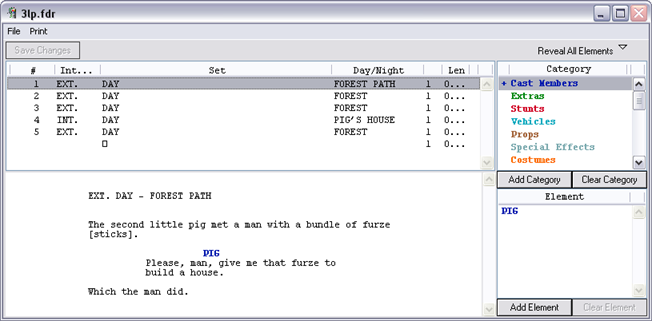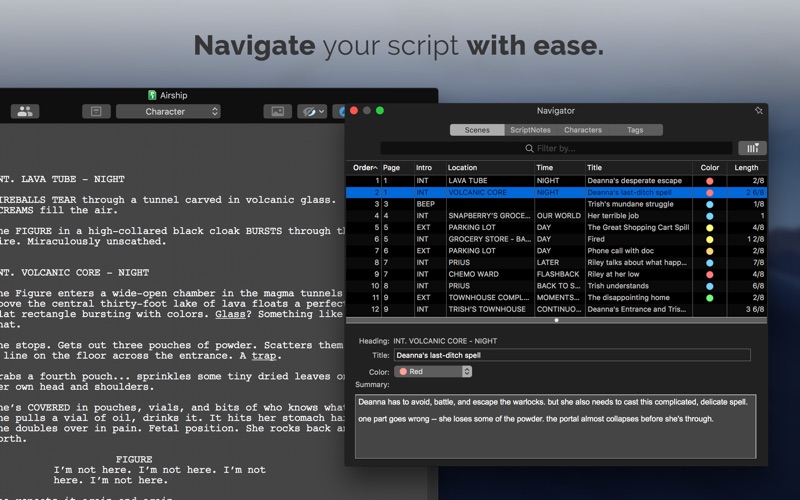
If you are working with Final Draft 7, you must export your project as an *.xml first- See Exporting Your Final Draft Version 7 Script as an *.XML File.

If you are working with Final Draft version 8, you can import the project file which is a *.fdx file. While importing your Final Draft script, you will retain the rich text formatting.
#BUY FINAL DRAFT TAGGER PRO#
If you created your script in Final Draft, importing it into Storyboard Pro should be your next step. The script appears in the Script caption field. Select your *.txt or *.rtf file and click Open.In the Storyboard view, click the Caption Menu button and select Import Caption.To use the Import Caption command to import your script: If your script is in *.txt or *.rtf file format, you can use the Import Caption command to import it into the Script caption. Once a script is imported into the Script caption field, you can drag and drop the text to other caption fields-see Formatting Text and Drag and Drop Text. You can use the Caption Menu button to access the import commands and the Text Formatting button to display a handy toolbar to format your text. This default caption field is specifically there for your script. Once it is collapsed, you can click the Expand button to display the entire section again. You can click on the Collapse button to hide the section and leave more room for the Script caption field. If your storyboard has sequences and acts, the total amount will also be displayed in that section. This collapsible section of the Storyboard view is where information, such as the duration and number of scenes and panels are displayed. By default, this view has a caption field specifically for the script.Īs opposed to the Panel view, whose content is sensitive to the selected panel, the contents of the Script panel stays the same no matter which panel is selected, allowing you to easily glance at information for the entire storyboard. The Storyboard view lets you import a script into your project. This section includes the following topics: In Storyboard Pro, you can easily import a script into your storyboard project to help edit captions. That said don’t hold me to that advice.A complete storyboard is not only made of drawings, but also dialogue, actions, and valuable indications. At $249 it’s a bit pricey but as long as you’re working on your next great screenplay featuring a robot that falls in love with a washing machine it is, presumably, a tax write off. Being able to add in photos and other multimedia is icing on the cake, so to speak.įinal Draft is now aiming at a more general audience and, while there are plugins for scriptwriting in Word and Google Docs, many screenwriters swear by the software.

The collaboration features are excellent, however, and great improvement over the previous versions. I’ve used Final Draft for a year now – I wrote a script with a college friend – and I didn’t notice much of a UX/UI difference between Final Draft 10 and 11. There is also a Night Mode for when you’re deep in thought and that third midnight glass of Burgundy as you puzzle out a messy plot point. You can also add images to scripts, a feature aimed at graphic novel writers and game creators. It also adds tagging so you can break down scripts in terms of props, animals, actors, budgets, and schedules. The system now also includes voice-to-text capabilities so you can dictate your next screenplay just by talking to your computer. You can also use the room to brainstorm ideas using the Beat Board view, essentially a cork board that makes it easy to put up ideas, scenes, or characters. Final Draft creates a chatroom where you and your collaborators can sit and work together on a single document and the changes are visible on all copies of the text.

The most important change is the decidedly proprietary collaboration system. Now the latest version is beginning to offer many competitive features including collaboration tools and powerful formatting tricks.

#BUY FINAL DRAFT TAGGER SOFTWARE#
While most of us are content with Word or Google Docs, screenwriters have gotten used to Final Draft’s unique key combinations and styling but made do with software that was, to be fair, far behind the state of the art. It’s an app dedicated to writing and developing screenplays and it has stood the test of time, going through 11 iterations to reach this latest version, the pinnacle of screenwriting warez. Of all the fascinating apps to be found out in the wild I’m especially enamored of Final Draft.


 0 kommentar(er)
0 kommentar(er)
